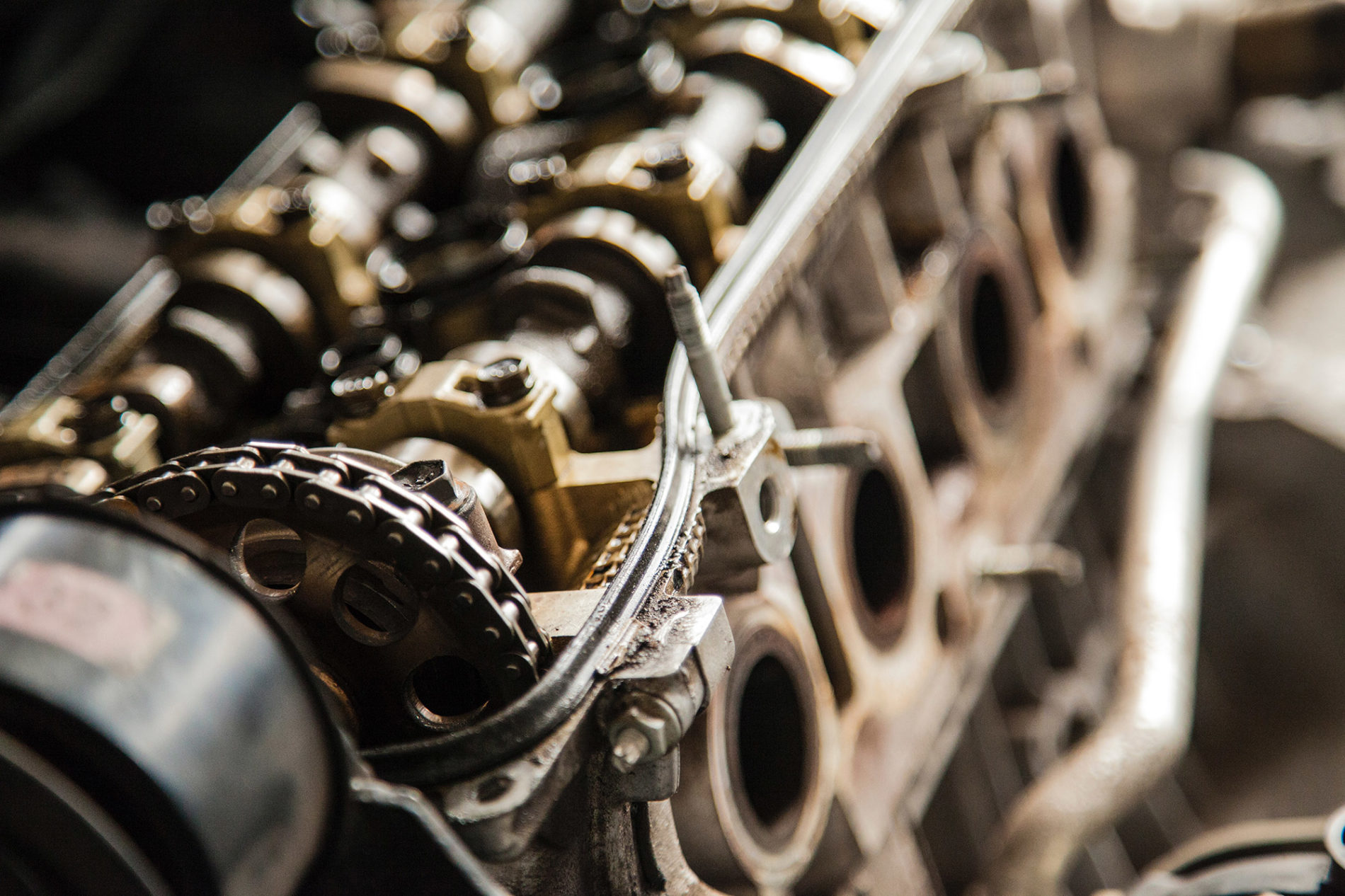
Dr. Gerhard Regner
Vice President, P & E
Achates Power, Inc.

Suramya Naik
Chief Engineer
Achates Power, Inc.
Does a conventional two-stroke have the same efficiency advantages as the opposed-piston, two-stroke (OP2S) engine? If you answered “no”, you’re right. But, do you know why?
One reason is due to heat transfer. As we highlighted in an earlier post and technical paper, the favorable surface area-to-volume ratio of the OP2S contributes to the engine’s inherent thermal efficiency benefits. So too does the architecture itself, which uses a different scavenging method than other two strokes.
For example, loop scavenged two-stroke engines use a cylinder head with two intake and exhaust valves. To reduce the short-circuit flow, the intake valves are masked—guiding the flow away from the exhaust valve during scavenging. Standard uniflow-scavenged two-strokes have intake ports that are controlled by the piston and four valves in the cylinder head that are used to manage the exhaust flow. The OP2S, on the other hand, relies on separate intake and exhaust ports that are controlled by the motion of the pistons.

To determine the gas-exchange performance, we need to evaluate the effective flow areas of the intake and exhaust ports or valves during the scavenging process. The ultimate goal is to deliver the same trapped air mass for all configurations. In a two-stroke engine, the intake and exhaust ports are open at the same time. This differs from a four-stroke engine since the piston motion has little effect on the mass flow through the engine during scavenging.
To compare the three different two-stroke configurations for their reduced effective flow area, you first need to define the effective flow areas for the valves and ports. Using flow bench measurements and computational fluid dynamics, we have confirmed that for the ports, the flow coefficient of constant 0.75 is a good average approximation for different port lifting.
The gas exchange period of a two-stroke engine is significantly shorter than that of a four stroke. Therefore, for two-stroke engines with valves, the cam profile has to be developed to open a valve within the design limits of velocity and acceleration in order to avoid excessive friction and valve tossing. When the opening and closing of intake and exhaust are assumed to have timing similar to that of the opposed-piston engine and velocity and acceleration limits are imposed, it leads to the valve lift profiles illustrated below.

Based on the reduced flow capacity shown for the loop-scavenged configuration, you can see how all valve-controlled two-stroke engines are compromised. The same is true for the uniflow-scavenged configuration with exhaust valves on top. The symmetric opening and closing of the intake port around bottom dead center means the compression stroke is always significantly longer than the expansion stroke, which leads to a penalty in gross indicated efficiency.

In an opposed-piston engine, however, the cranks are phased to enable an exhaust blowdown event, meaning the intake opening and closing is not symmetric. As a result, the difference between the compression and expansion stroke will always be lower than for a uniflow-scavenged engine and, therefore, the gross indicated efficiency loss caused by a difference in compression to expansion stroke is lower.

When comparing the effective flow areas of the intake and exhaust valves, the OP2S also has an advantage. Due to the OP2S crank lead, the intake port closing is later than the uniflow poppet valve engine for the same exhaust port or valve closing. Therefore, the scavenging process is extended and more fresh charge can enter the cylinder.
After viewing the effective reduced flow areas for all three configurations, it’s clear that loop-scavenged engines are not as efficient, since they have much lower blowdown and scavenging effective time areas as compared to OP2S engines, which have the highest scavenging time areas. The opposed-piston port engine also starts scavenging earlier, reaches a higher level and ends the period later than the uniflow-poppet configuration. As an integral over time, the advantage in flow area of the OP2S in this example is 22.2%. To get the same mass flow, the intake manifold pressure and/or the pressure difference between intake and exhaust has to be raised for engines with loop-scavenged or uniflow-poppet configurations, leading to higher pumping losses. Based on this comparison, the opposed-piston engine produces the lowest pumping losses of all configurations.

With reduced heat transfer, a better relation between compression and expansion ratios, a higher effective flow area and higher scavenging efficiency, the OP2S truly is more efficient than other two-stroke powertrains.

Great post. I used to be checking continuously this blog and I’m impressed!
Extremely helpful information specifically the final section 🙂 I maintain such information much.
I was looking for this particular info for a long time.
Thanks and good luck.
I love this article and I would love to see another article on the different styles of porting (loop,scavenged,etc) and learn all.i can about these wondrous little engines
I think that in the 2015 time period Achates had a web animation showing a clever arrangement of crank arms to third crank shaft that accomplished different timings for physical opening and closing of ports relative to before and after bottom dead center. Do I remember that correctly? In 2019 your discussion and web animation do not indicate that.
Comments are closed.